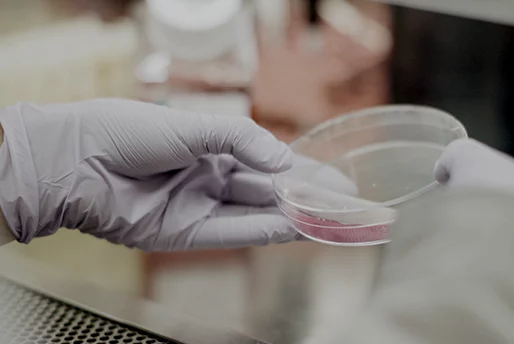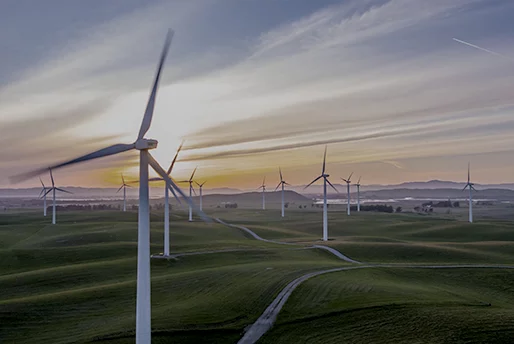Industries of Impact
Corporations affect the lives and habitats of billions of animals annually. The Center has evaluated a number of industries to determine those with negative or, in some cases, positive impacts on the welfare of animals.

Food & agriculture
The global food and agriculture industry consists of food/agriculture producers, restaurants, food distributors, and other food services. These companies are the primary drivers of agricultural production around the world.
(continued)
This industry has one of the highest impacts on animal welfare, since many companies are involved in animal slaughter. Companies also have substantial exposure to animal products such as eggs, dairy, and meat, whether directly (through production) or indirectly (through sourcing). Further, companies in this industry are exposed to animals in the wild through sourcing and production of key raw materials such as palm oil, paper/timber, soy, cocoa, and coffee. These commodities drive deforestation and habitat destruction, impacting rare and threatened species globally.

FASHION
The textile and apparel industry converts raw materials into refined fabrics, hides, and synthetics primarily used in the manufacture of clothing. This is a booming industry, as consumers are purchasing textiles and apparel products at higher frequencies, while getting less utility from each product before it is discarded.
(continued)

Cosmetics and Personal Products
The household and personal products industry, also known as consumer goods, includes cosmetics, hair products, and cleaning products. Many companies in this industry must comply with regulations requiring tests to confirm product safety before going to market.
(continued)
Often these tests are conducted on animals when there are no known alternatives or when the regulating agency does not recognize non-animal testing methods. These experiments are conducted primarily on rabbits, mice, hamsters and guinea pigs. Of note, the European Union, India, and Israel have banned this practice and require alternative testing methodologies. Solutions like computer programs or in vitro practices are proving to be more predictable, time-efficient and cheaper.

Pharmaceuticals
The pharmaceuticals industry consists of companies that manufacture medications, vaccines and diagnostic tools to treat medical ailments. Often mandated by regulation, animal testing has long been viewed as a suitable proxy for the human body.
(continued)
Experiments are commonly performed on rodents, although dogs and primates are also subjected to certain drug trials. There has been increased momentum toward corporate adoption of the 3R’s — efforts to reduce, replace, and refine laboratory animal testing. Alternatives such as computer modeling and in vitro methods serve a dual purpose of driving down costs in the drug development pipeline and saving animal lives.

Travel & Leisure
The fast-growing travel and leisure sector includes hotels, cruise liners, amusement parks, airlines, and travel agencies. In 2017, global revenue for this industry approached $1.6 trillion. Wildlife attractions account for between 20% and 40% of global tourism, with 3.6 to 6 million people visiting these sites annually.
(continued)
A major industry trend towards sustainability demands that companies throughout the sector integrate animal welfare measures into their operations. The principles of nature-based sustainable tourism, referred to as “ecotourism,” seek to minimize impacts on wildlife through direct tourism activities and indirect practices like waste management or food sourcing.

Retail
The retail industry provides goods and services to consumers. Common types of retailers include department stores, grocery stores, home improvement stores, and super shopping centers.
(continued)
Many retailers also manufacture or sell animal-tested cosmetics, drugs, and personal products. Further, businesses in this industry engage in practices which cause significant habitat destruction. Exposure to GHG emissions in the retail industry is also high, and covers direct emissions, indirect emissions from purchased energy, and emissions within the supply chain.
Given its wide scope of operations, the industry has varied effects on animal welfare. Companies operating in food distribution and retail have primary exposure to issues affecting livestock and poultry. General merchandisers, apparel retailers, and department stores have animal exposure as purveyors of clothing, including leather, goose and duck down, and wool. Many retailers also manufacture or sell animal-tested cosmetics, drugs, and personal products. Further, businesses in this industry engage in practices which cause significant habitat destruction. Exposure to GHG emissions in the retail industry is also high, and covers direct emissions, indirect emissions from purchased energy, and emissions within the supply chain.

Furniture and Home Goods
The manufacture and sale of furniture and interior accessories represents a growing, global industry. In 2017, the global furniture market was valued at USD 330 billion.
(continued)
The industry’s consistent growth is driven by demand for premium furniture and reflects broader trends in urbanization and development. The sourcing of wood and other raw materials represents a significant threat to ecosystems. Illegal logging and the conversion of natural forests to tree plantations destroys critical habitat for animals. Animal products like leather and feather down are also used in this industry, exposing it to wild and captive animal welfare risks. A buyer-driven industry, furniture companies are shifting supply chains based on new environmental standards and consumer demand for sustainable products.

Chemicals
In the United States, over 96% of all manufactured products are directly touched by chemicals, according to the American Chemical Council (ACC). Chemical products are foundational to other industries, like agriculture, construction, textiles and mining.
(continued)
Environmental concerns include climate protection, pollution, and product safety. Animals are used within this industry to assess impacts on environmental and human health. These experiments are referred to as toxicity tests and are most commonly conducted on guinea pigs, mice, rabbits and mice. Even if chemicals pass toxicity tests, their production can have negative consequences for wild animals when companies do not adhere to strict safety and emissions protocols.

Paper & Forest Products
The paper and forest products industry is comprised of companies that grow, harvest, or produce materials from wood. This industry’s operations destroy habitat and release large amounts of carbon when forests are not managed sustainably.
(continued)
Of particular concern, the most valuable species of trees, tropical hardwoods, are found in some of the most biodiverse places in the world. For example, Southeast Asia has lost 50% of its primary forest due to logging. Any disturbance to timberlands can affect animals, but there are methods of growing and harvesting trees that maximize ecological and financial outcomes. The growing prevalence of sustainably managed forests has been driven and supported by third-party certification systems like the Forest Stewardship Council (FSC) and the Programme for the Endorsement of Forest Certification (PEFC). Still, the industry struggles with traceability along supply chains and management practices in developing countries with limited regulations and land tenure rights.

Environmental Services
The environmental services market collects and disposes of two billion tons of solid material annually. Projected to surpass USD 560 billion in revenue by 2020, this industry continues to grow, driven by global consumptive patterns.
(continued)
Generally, solid waste is incinerated or contained in landfills with a limited lifetime. Similarly, wastewater should be treated through a variety of methods to remove substances harmful to human and ecosystem health. In countries with loose environmental regulations, waste may be disposed of informally or dumped. The global trade in waste and recycling has also shifted the impact of consumptive patterns to an international scale. Improper waste management has wide-ranging impacts to animal behavior, health, and habitats.

Oil & Gas
A main driver of the global economy, the oil and gas industry generates about 10% of the world’s gross domestic product. According to the BP Statistical Review of World Energy, 87% of the world’s primary energy use comes from Oil, Natural Gas, and Coal.
(continued)
Future projections of energy use predict a similar mix of fuels to meet global energy demand. The oil and gas industry can be divided into three distinct components: upstream, midstream, and downstream. Each sector faces unique environmental challenges. The upstream sector covers exploration and drilling. The midstream sector deals with the logistics of transporting, storing, and processing of crude oil. The downstream sector, also known as the refining and marketing sector, creates different products and distributes those to end users.

Construction
There are also companies within the construction industry that focus on infrastructure development, like bridges, pipelines, and airports. The construction industry includes companies that are responsible for the design, planning, and building of commercial and non-commercial complexes.
(continued)
Exposure to animals is considered to be less direct for this industry, since construction does not involve animal products. However, wild animals are heavily impacted when construction disturbs natural habitat.